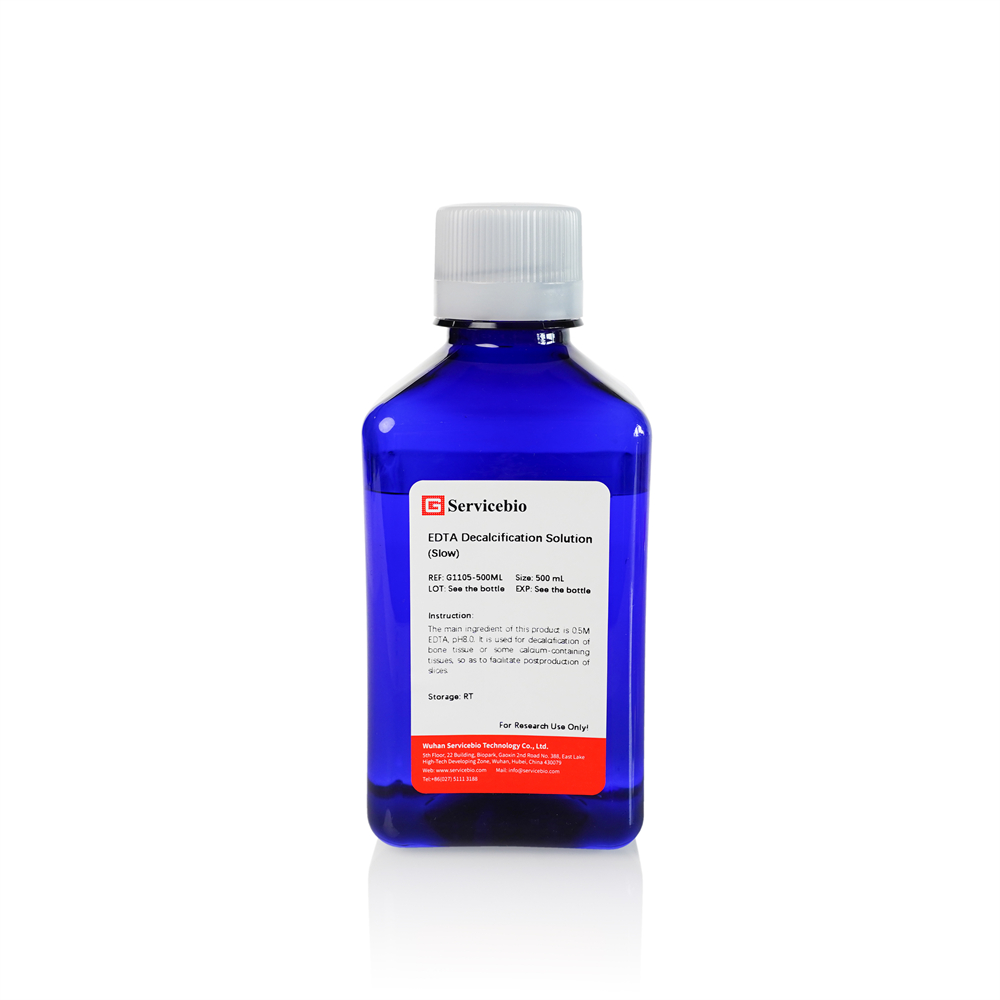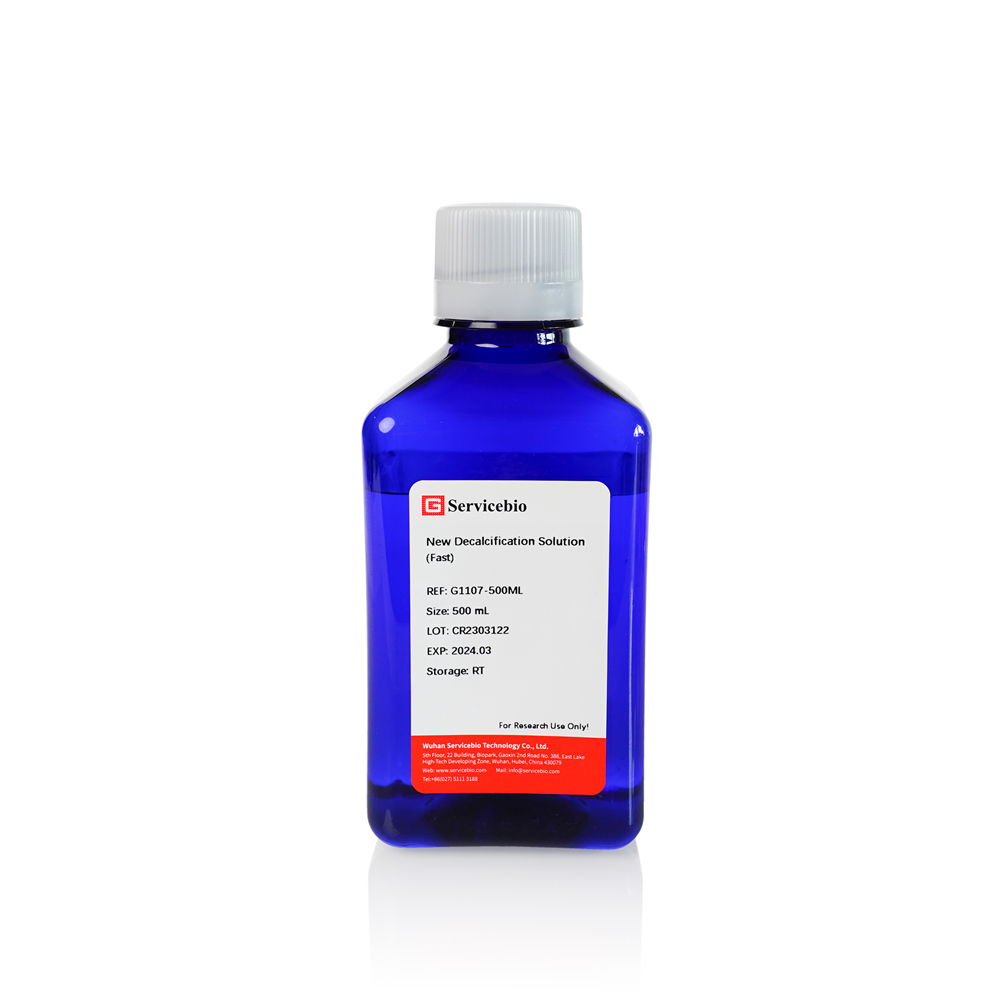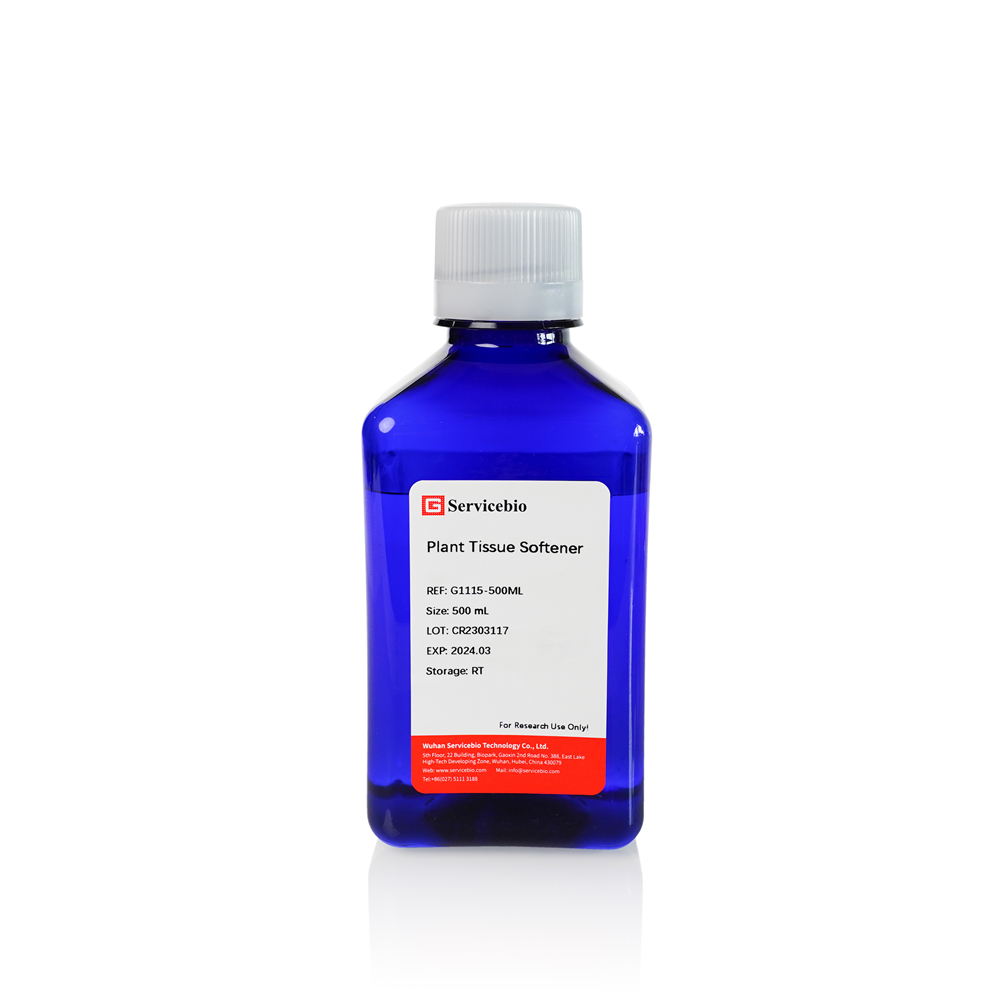Description
Product Information
| Product Name | Cat.No. | Spec. |
| EDTA Decalcification Solution (Slow Decalcification) | G1105-500ML | 500 mL |
Description
In pathological experiments, when sections are made for bone tissue or some calcium-containing tissues, they cannot be made directly because of their high hardness, so they need to be removed to make the tissues soft before they can be made into sections. The commonly used decalcification reagents include EDTA, organic acid, inorganic acid, etc. Among them, EDTA is a mild chelating decapping machine, which has minimal impact on tissue structure and can better preserve some enzymes in tissues. The decalcification of tissues after EDTA decalcification can be tested by histochemistry and in situ hybridization, etc. The decalcification speed is slow and the decalcification cycle is long. It generally takes weeks to months and is related to the size of decalcified tissue. Organic acid is the use of acid dissolved calcium, decalcification speed is relatively fast, and there is a certain degree of damage to tissue structure. The inorganic acid decalcification is usually hydrochloric acid or nitric acid decalcification, which has the fastest decalcification speed but the largest tissue damage.
This product EDTA decalcification solution (slow decalcification), the main ingredient is 0.5 M EDTA, pH 8.0 at 25℃.
Storage and Handling Conditions
Store and transport at room temperature, valid for 12 months.
Assay Protocol
After sampling, the tissue was fixed in a sufficient amount of 4% paraformaldehyde fixation solution for more than 24 h, and then put into the original decalcification solution, the volume of decalcification solution should be 15-20 times of the tissue volume. During decalcification, replace fresh decalcification solution every three days, until the tissue becomes soft, the pin can be smoothly inserted into the tissue, and the bone tissue is elastic and easily bent when the hand touches it, which is judged as the end of decalcification. EDTA decalcification is mild and slow, and different tissues need different decalcification time. During decalcification, observe the tissue closely to avoid excessive decalcification damage to tissues and affect subsequent experiments.
Note:
1. Please use the product in a well-ventilated place with proper protection to avoid inhalation.
2. Pay close attention to tissue decalcification during decalcification to avoid excessive decalcification affecting subsequent experiments.
3. The company also provides fast decalcification solution, decalcification speed is fast, you can choose to use according to the experimental needs.
4. Wear a lab coat and disposable gloves during operation.
For Research Use Only!



